Physical Address
304 North Cardinal St.
Dorchester Center, MA 02124
Netter: 42, 53–54, 83–85
McMinn: 38–41
Gray's Atlas: 503–506
Review the superficial anatomy of the face:
Glabella
Root of nose, dorsum of nose
Tip of nose
Ala
Columella nasi
Philtrum
Mental protuberance
Modiolus
Vermillion border
Palpate the following facial landmarks on the cadaver:
Jugular notch
Mental protuberance
Nasion
Glabella
Vertex
External occipital protuberance (inion)
Mastoid process
Ramus, angle, and body of mandible
Zygomatic arch
Infraorbital margin
Supraorbital margin
Superciliary arch
With a marker, outline the dissection for the cadaver as follows ( Fig. 21.1 ):
Make a line from the mental protuberance to the vertex. The line should encircle the lips, nostrils, and eyelids.
Make a second line from the mental protuberance to the lobule of the ear.
Make a third line from the vertex to the upper part of the helix of the ear.
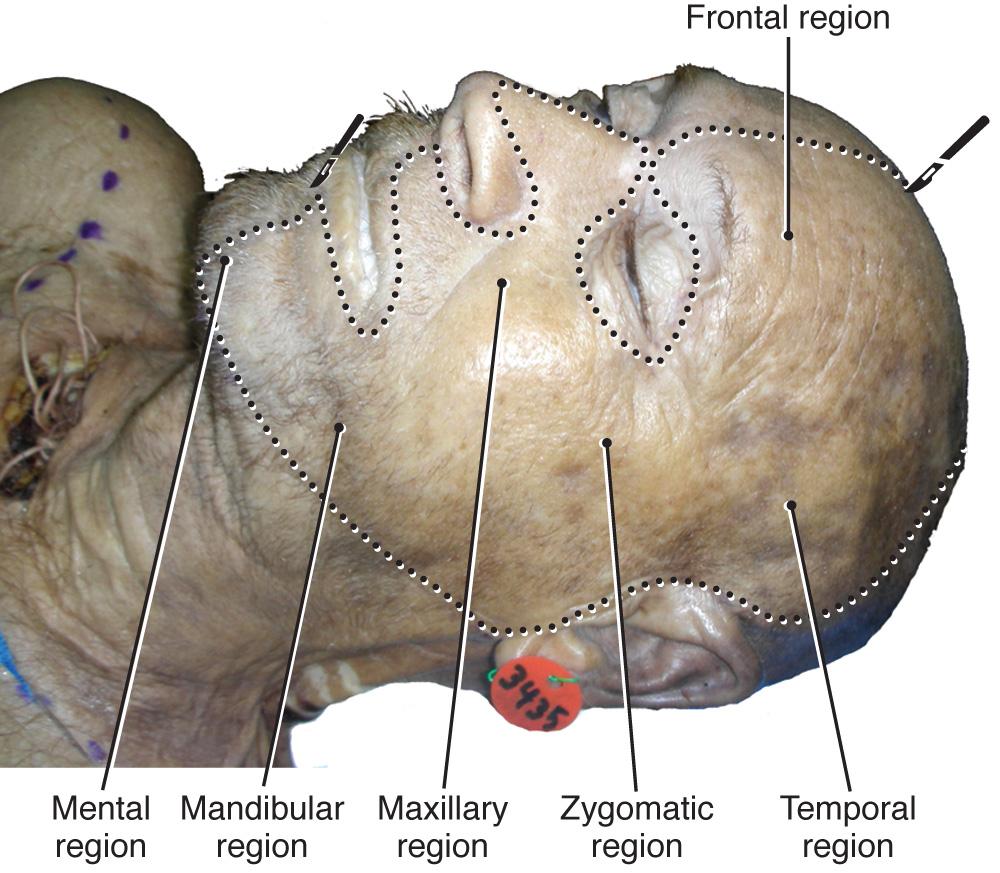
Identify the six major surface regions (temporal, frontal, zygomatic, maxillary, mandibular, mental).
Based on the lines drawn, make an incision between the angle of the mandible and the mental protuberance ( Fig. 21.2 ).
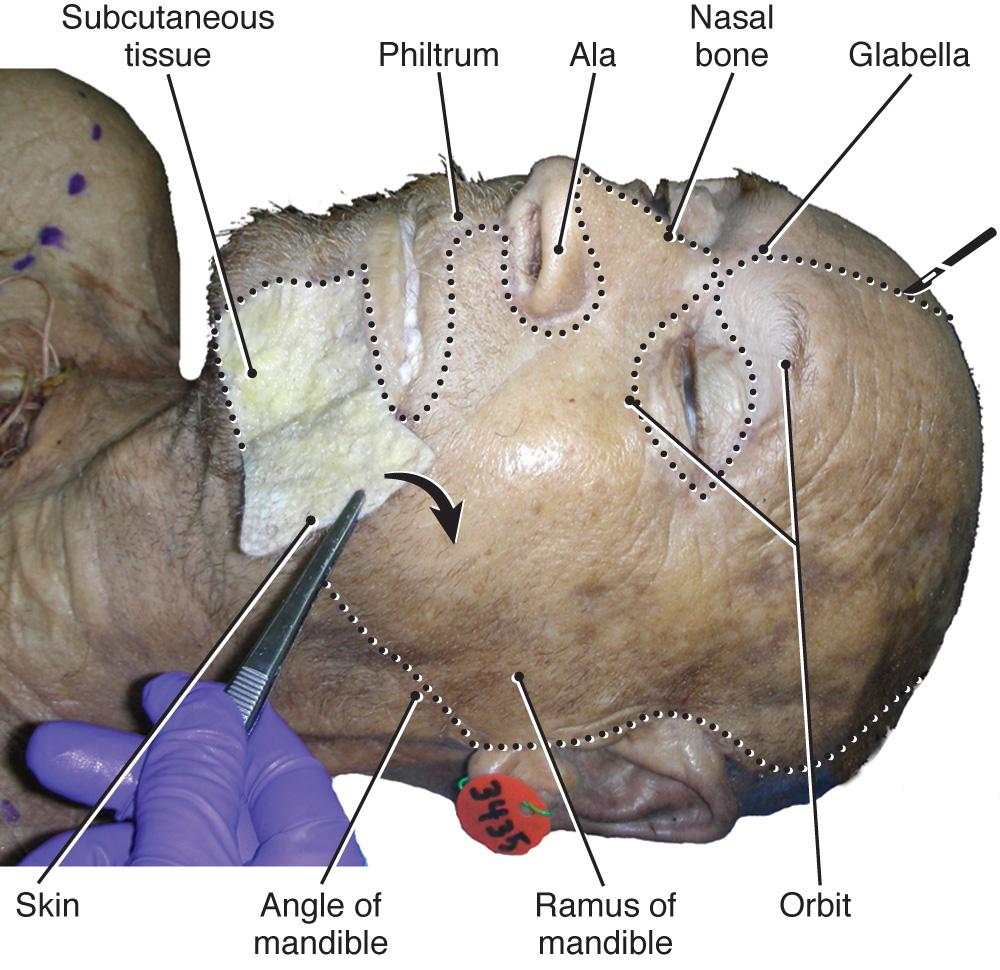
Carefully reflect the flaps of skin (from medial to lateral) created by the incisions ( Figs. 21.3 and 21.4 ).
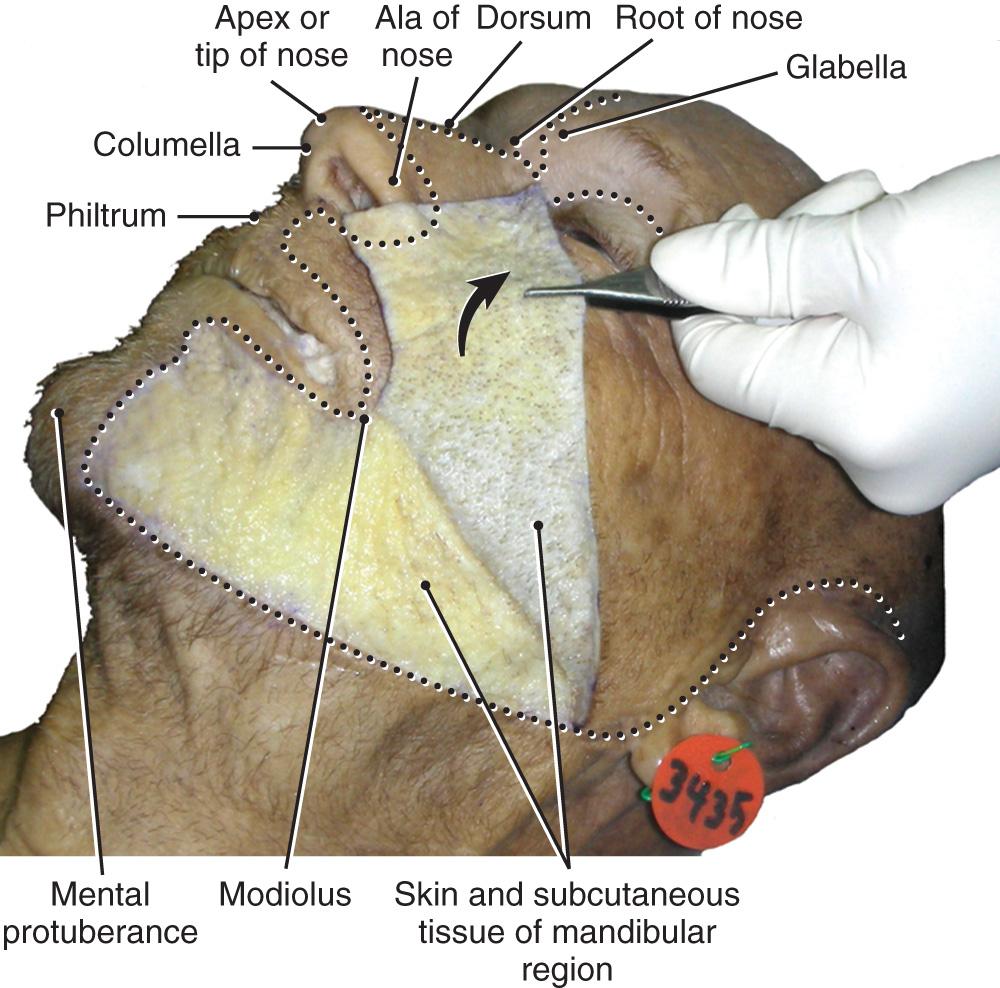
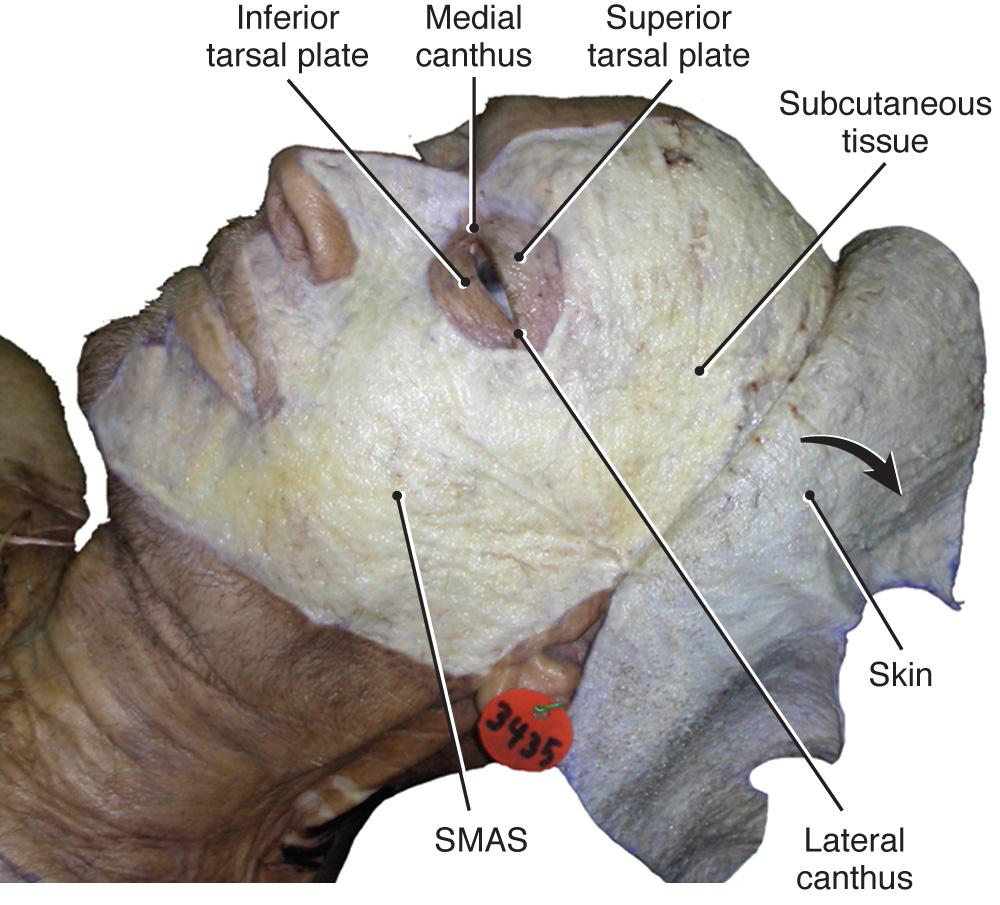
Beneath the skin, notice the surface of the face covered almost entirely by fat. This fibrofatty tissue is also known as the superficial musculoaponeurotic space or system (SMAS) ( Fig. 21.5 ).
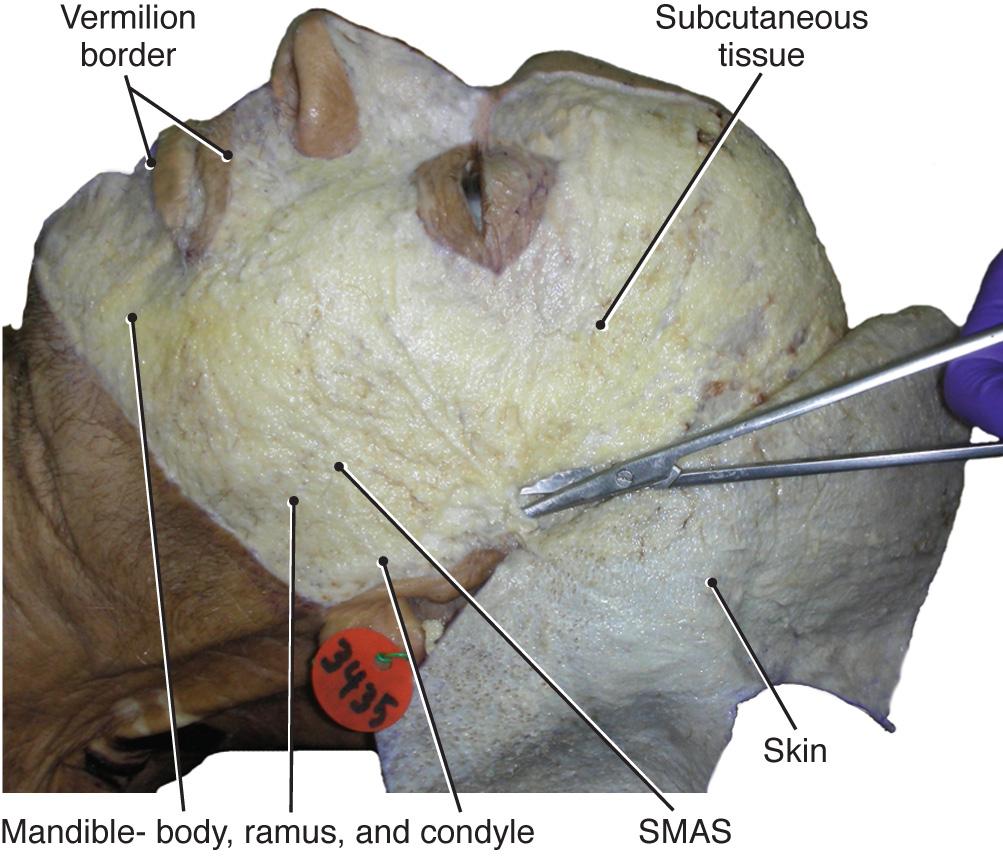
The muscles of facial expression vary in thickness. Pay special attention when removing the skin and SMAS to avoid cutting any muscles, because many attach directly into the skin.
Situated in front of the ear (auricle), the parotid gland is covered with variable amounts of fat. Using the separating technique with your scissors, reflect as much fat as possible.
Identify the substance of the parotid gland, which typically extends into the space between the zygomatic arch and the angle of the mandible ( Fig. 21.6 ).
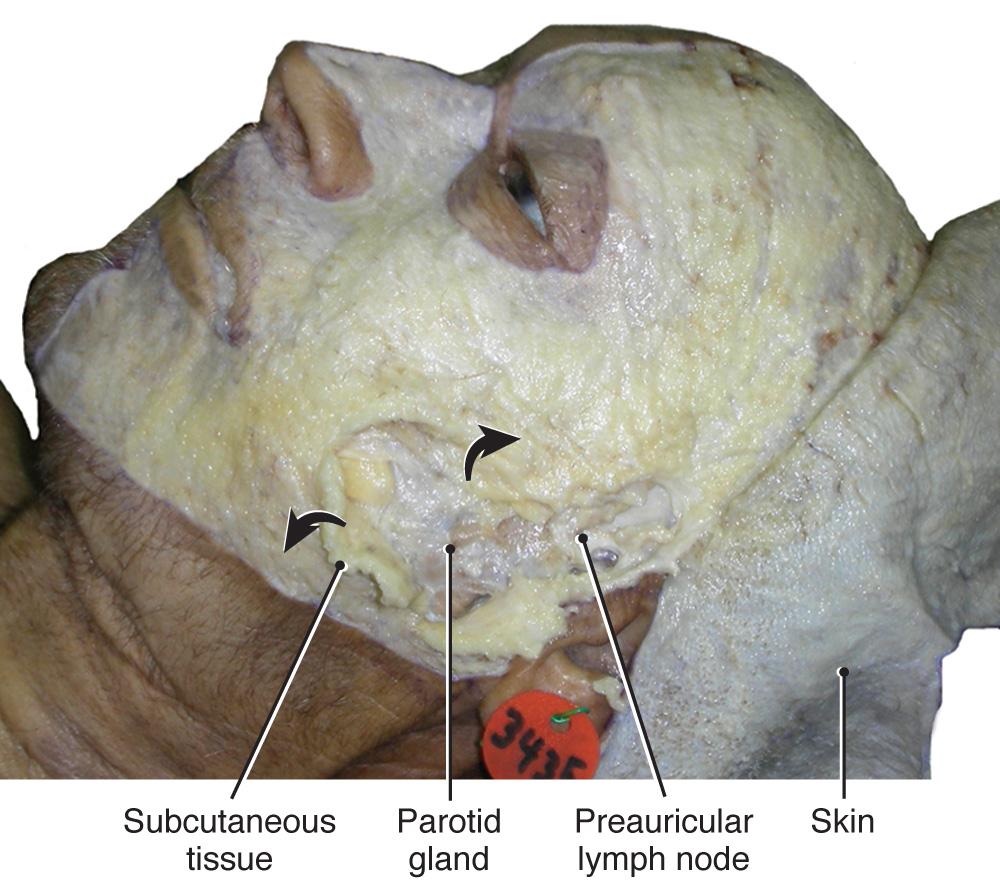
The parotid gland is covered by a dense fibrous capsule, which sends septae into the gland, dividing it into lobules.
Begin to reflect the SMAS medially over the mandibular region to reveal the parotid gland (see Fig. 21.5 ).
Continue to remove the SMAS from the mandibular region ( Fig. 21.7 ).
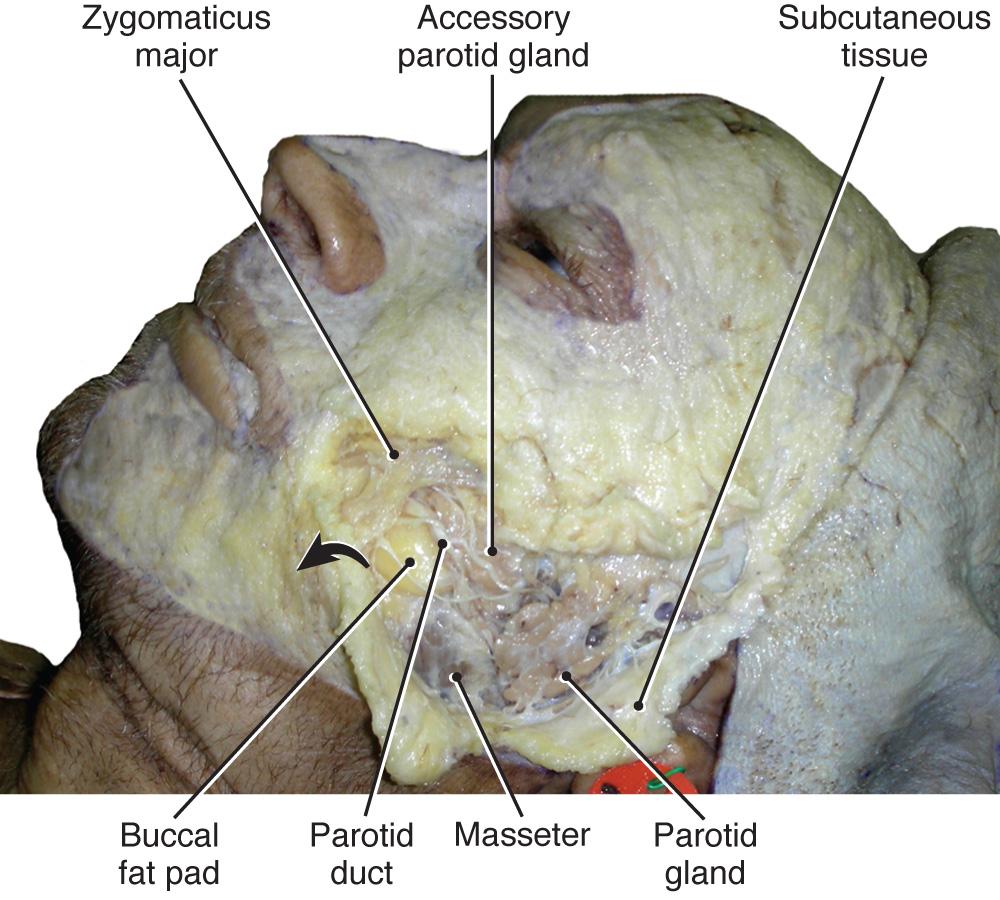
Identify the parotid duct , usually found emerging from the anterior edge of the parotid gland, about 1 inch (2.5 cm) inferior to the zygomatic arch ( Figs. 21.7 and 21.8 ).
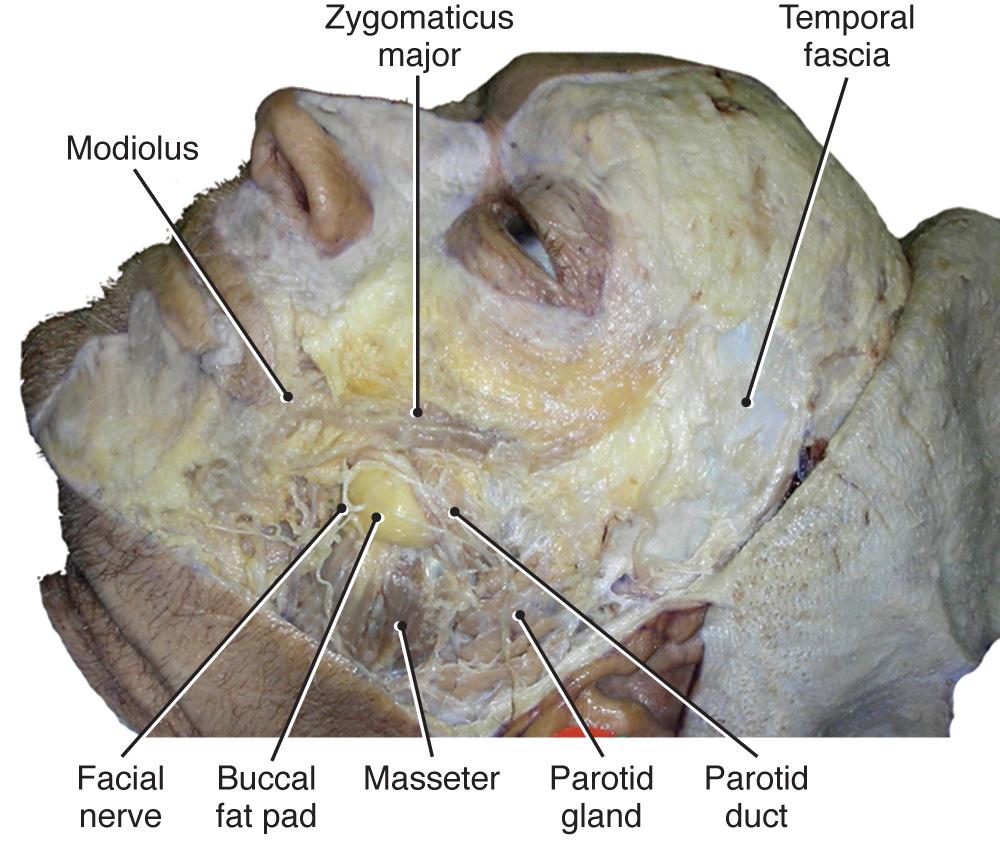
From this point, the parotid duct passes horizontally across the masseter muscle, then turns around the anterior edge of the masseter and pierces the buccinator muscle ( Fig. 21.9 ).
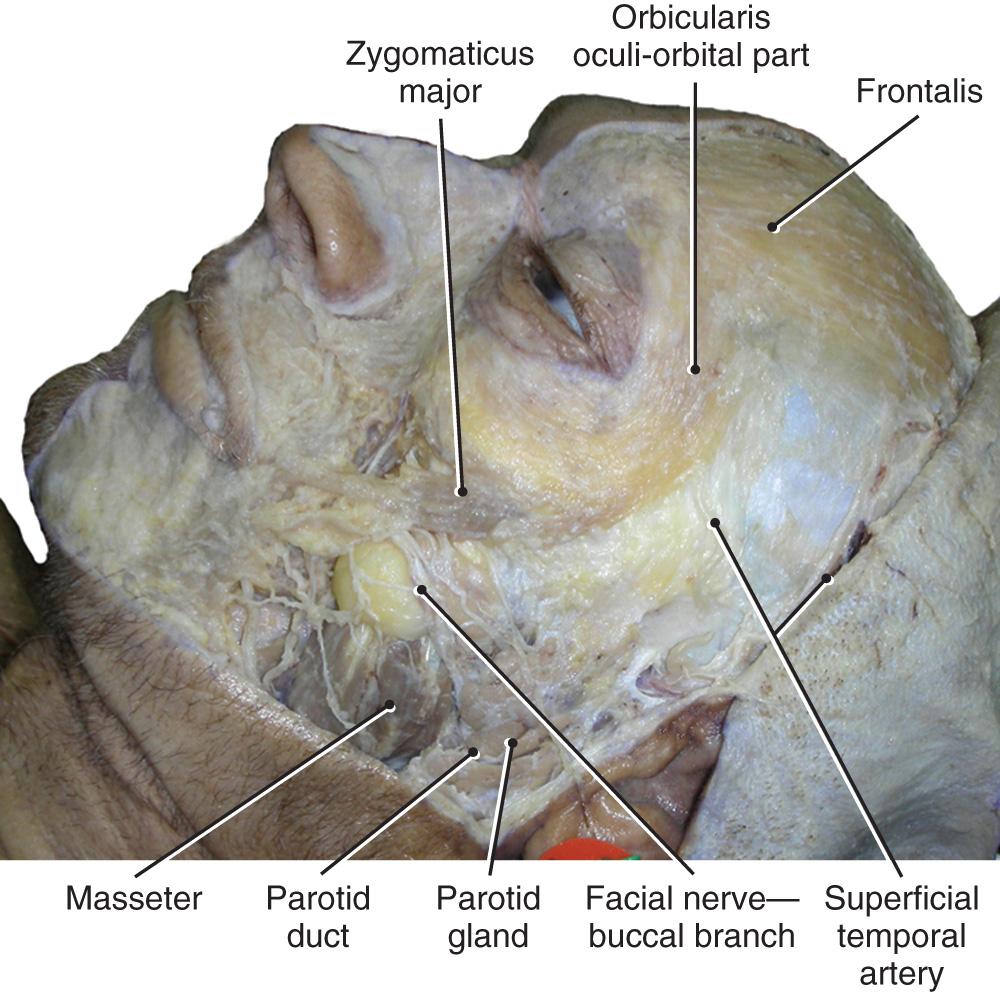
Remove the SMAS from the maxillary and temporal regions (see Fig. 21.8 ).
Note the following structures: zygomaticus major muscle, masseter muscle, and temporal fascia (see Figs. 21.7 and 21.8 ).
Identify the buccal fat pad.
The buccal fat pad is an encapsulated mass of adipose tissue, which lies between the masseter and buccinator muscles.
An accessory parotid gland can often be identified along the parotid duct in its course across the masseter muscle (see Figs. 21.7 and 21.8 ).
Clean the mimetic muscles, taking care to preserve the branches of the facial nerve, which innervate them.
Remove the SMAS from the orbital region and identify the frontalis and orbicularis oculi muscles (see Fig. 21.9 and Plate 21.1 ).
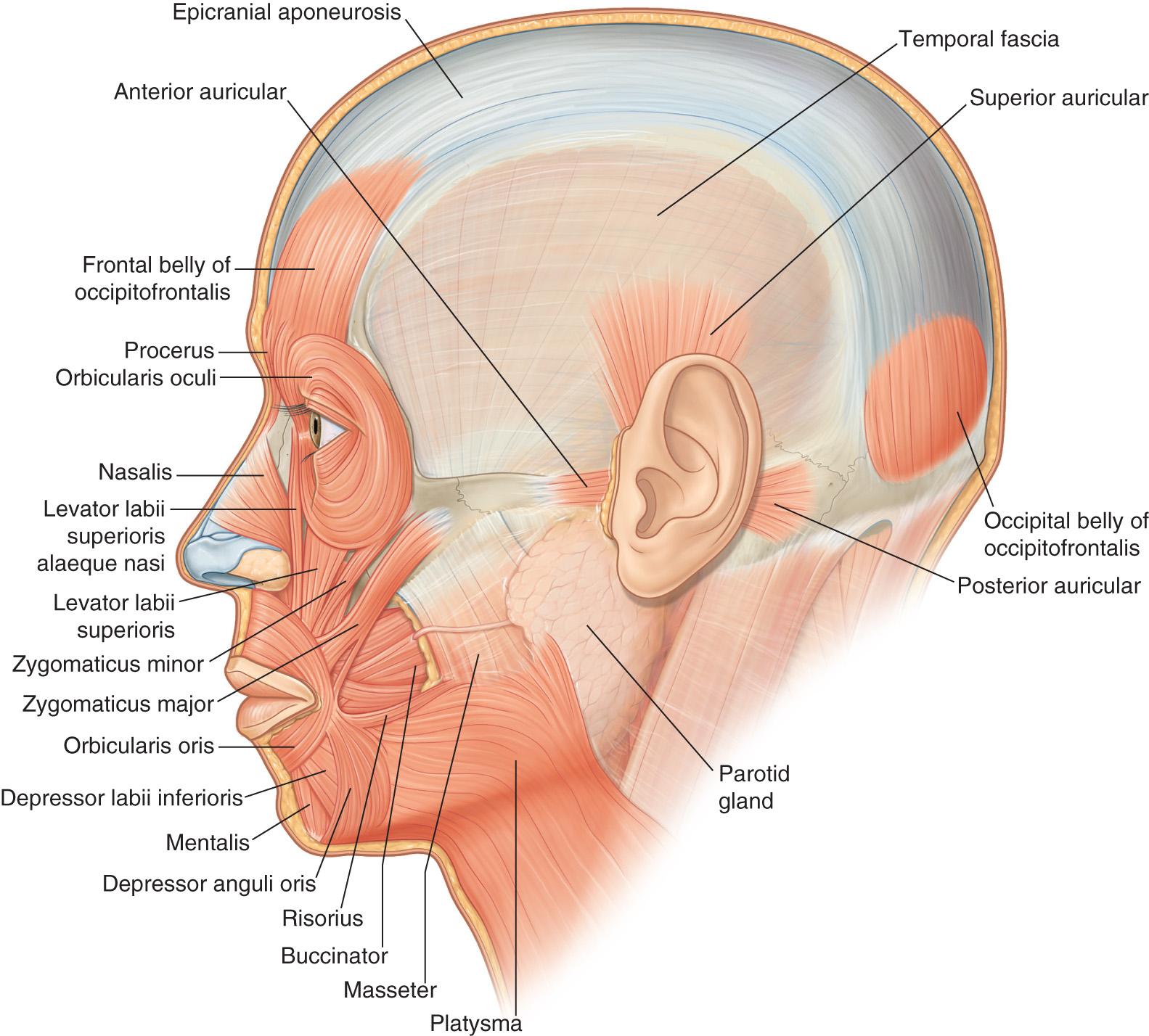
Identify the parts of the orbicularis oculi muscles:
Orbital
Palpebral
Lacrimal
Identify the superficial temporal artery just superior to the zygomatic arch in front of the external acoustic meatus (see Fig. 21.9 ).
The auriculotemporal nerve can be found just posterior to this artery.
The transverse facial artery runs superior to the parotid duct, but because of its small size, identifying this artery is often difficult.
Identify several of the mimetic muscles ( Fig. 21.10 ):
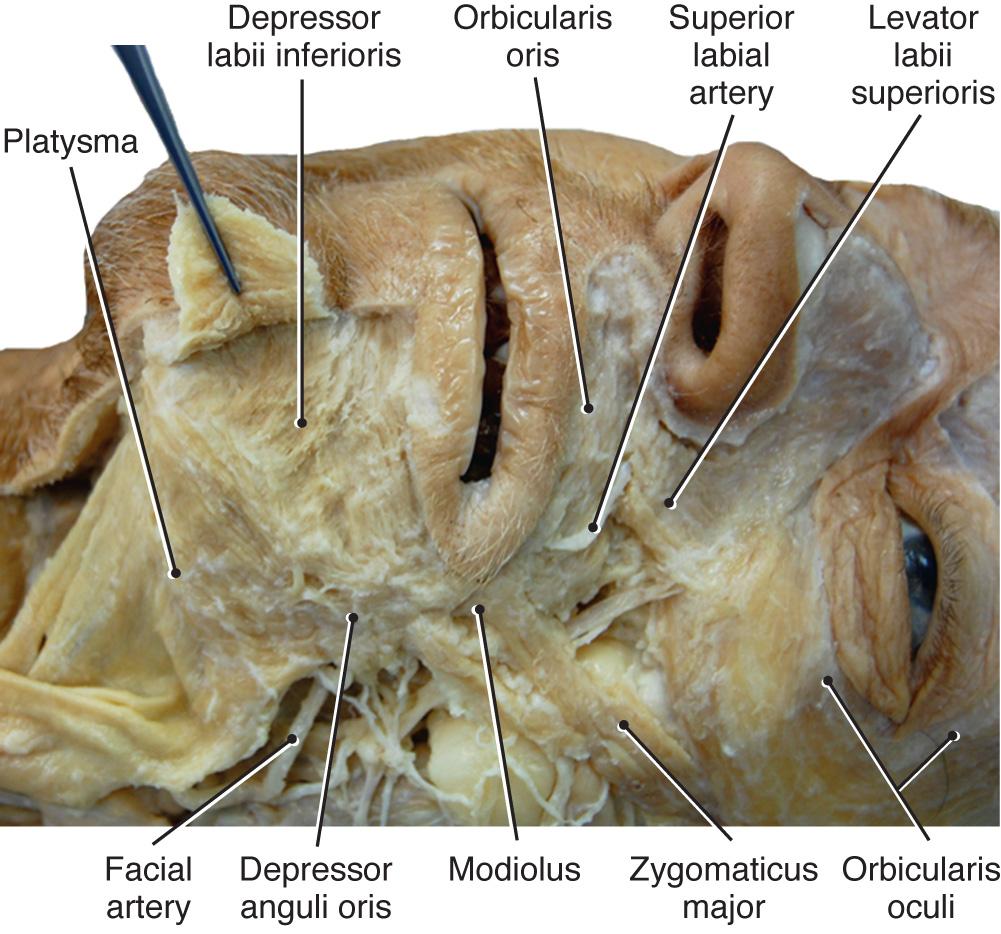
The muscle surrounding the lips is the orbicularis oris .
Often you will need to remove additional skin from the margins of the lips to expose the orbicularis oris fully. Fibers from several other facial muscles merge with the orbicularis oris, including the buccinator and the elevators and depressors of the angles of the mouth.
Identify the zygomaticus major muscles.
Identify the zygomaticus minor muscles.
Identify the depressor anguli oris muscles.
Identify the depressor labii inferioris muscles.
Identify the levator labii superioris alaeque nasi muscles.
Identify the buccinator muscle.
The platysma muscle has been identified in the dissection of the neck (see Chapter 20 ).
Some platysma fibers pass up over the lower border of the mandible and mingle with the depressor muscles of the lips and with the risorius muscle more laterally.
Become a Clinical Tree membership for Full access and enjoy Unlimited articles
If you are a member. Log in here